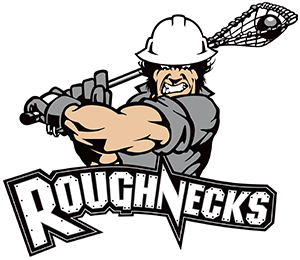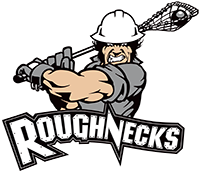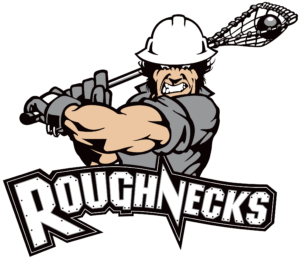Terms of the Turf
Occurs when the team on offense fails to advance the ball past midfield within 8 seconds after taking possession in their defensive half of the floor.
Awarded to the player or players (maximum of two) who touched the ball prior to the goal, provided no defender plays or possesses the ball in between.
Slowing or stopping an opponent in possession of the ball. The check must be above the waist and below the shoulders.
One-on-one scoring opportunity with the offensive player and the goaltender.
When each team is given the same amount of penalty time arising out of the same incident, the offending players shall not be released until the expiration of the penalty. Teams do not lose floor strength, and the ball is awarded to the team who was in possession prior to the fouls.
The back and forward motion of the stick with the ball in the pocket. The cradling keeps the ball inside the pocket, making it difficult for the defender to dislodge or take it away.
Nine-foot radius area which surrounds the goals at each end of the playing surface. A goal is disallowed if a player scores while standing inside this area or steps on the line that defines the crease.
Using the shaft of the stick between his hands, the defensive player tries to push on the opponent’s arm forcing a poor pass or shot.
Players can be ejected from a game for several reasons including being the third man participating in a fight or accumulating two major penalties in one game.
At the start of the game, any quarter of play, and after a goal is scored, the ball is placed in the center circle and two opposing players face each other in a scrum of possession.
Indoor lacrosse is played on a hockey rink covered by an artificial turf playing surface, which is usually referred to as the floor or the carpet (as opposed to the field). There must be boards around the sides of a minimum height of 3′ high. Dimensions are 200′ x 85′ but may be altered.
Awarded to the last player on the scoring club to touch the ball prior to the ball entering the net.
A player without the ball starts to cradle his stick drawing the attention of the defense while another teammate candidly passes the ball or shoots on net.
There is no possession and the ball is bouncing, rolling or rebound off the boards or goaltender. Loose balls are also sometimes referred to as ground balls.
Illegal screens, touching the ball in play with a free hand, pushing, and illegal procedure are among the acts that can cause a team to lose possession of the ball.
Five minutes in length. Penalty time expires on the scoring of three goals, but penalized player must remain in penalty box for full five minutes.
A team is considered this, or short-handed, when they must send out a four- or three-man unit as a result of having one or two of their players in the penalty box.
Two minutes in length. Penalty expires upon the scoring of a goal; penalized player returns to floor.
Lacrosse nets are 4′ (high) x 4’9″ (wide). The circle around the goal known as the crease is 18’6″ in diameter. An offensive player is not allowed to intentionally step into the crease area.
Legal action by an attacking player to impede the defensive coverage of a defender on an attacking player “without” possession of the ball.
The first pass from the goaltender that begins the transition from defense to offense.
Off-field area, near midfield, where players serve penalty time.
Legal interference by an offensive player from a set position on a defensive player who is playing defense on the ball carrier. If two players execute the pick, it is referred to as a double pick.
When a team has an (extra) man advantage because of a penalty situation against the opposing team. Power plays can take the form of five-on-four, five-on-three, or four-on- three. Following are some examples of what is and is not considered a power-play goal:
- If a club has an advantage on a minor penalty starting at 2:02 of the quarter and it scores at 4:02, the goal is not a power-play goal.
- If a club scores on a delayed penalty, the goal is not a power-play goal.
- If a club has an advantage due to a five-minute major penalty, that club is always credited with having one more advantage than the number of power-play goals it scores during that advantage; because the penalty does not expire, a new advantage begins after such a power-play goal. For example, if Team A scores one goal during a major penalty, it is credited with two advantages.
- If a club is on a power play for any length of time, it is considered to have had an advantage.
- A double minor constitutes two opportunities.
Each team has a 23-man active roster. A team dresses 20 players for games (18 runners and two goalies). A team shall be composed of six (6) players on the floor; 5 runners and one goalie.
A shot on goal that is difficult for the goaltender to see because of the high amount of player traffic in front of the crease area.
A goal scored by a club while it is at a manpower disadvantage due to a penalty.
If a player shoots the ball with the intention of scoring and if that shot would have gone in the net had the goaltender not stopped it, the shot is recorded as a shot “on goal”. Shots which hit either of the goalposts or the crossbar are also credited as a shot on goal.
If a defending player commits a minor or major penalty against an opponent in possession of the ball where there is offensive momentum and the opponent doesn’t lose possession, the official raises his hand and does not blow the whistle until the 30-second shot clock expires, or a goal is scored or possession is lost.
In the event of a tie score at the end of the regulation game, play shall continue, after a two- minute interval, with sudden-death overtime. The period(s) shall be fifteen minutes (each) until a goal is scored, thus deciding a winner.
Results in loss of possession of the ball. Minor violation; no time penalty.
If a penalty or goal occurs in the last minute of a quarter, the time is rounded off to the previous second (i.e. – if a penalty is called with 14.6 seconds left in the quarter, the time is indicated as 14:45, and not 14:46.
Four 15-minute quarters; two minutes between quarters; 16 minute halftime.
Each team is allowed one 45-second time-out per half. No carryover time-outs are permitted.


